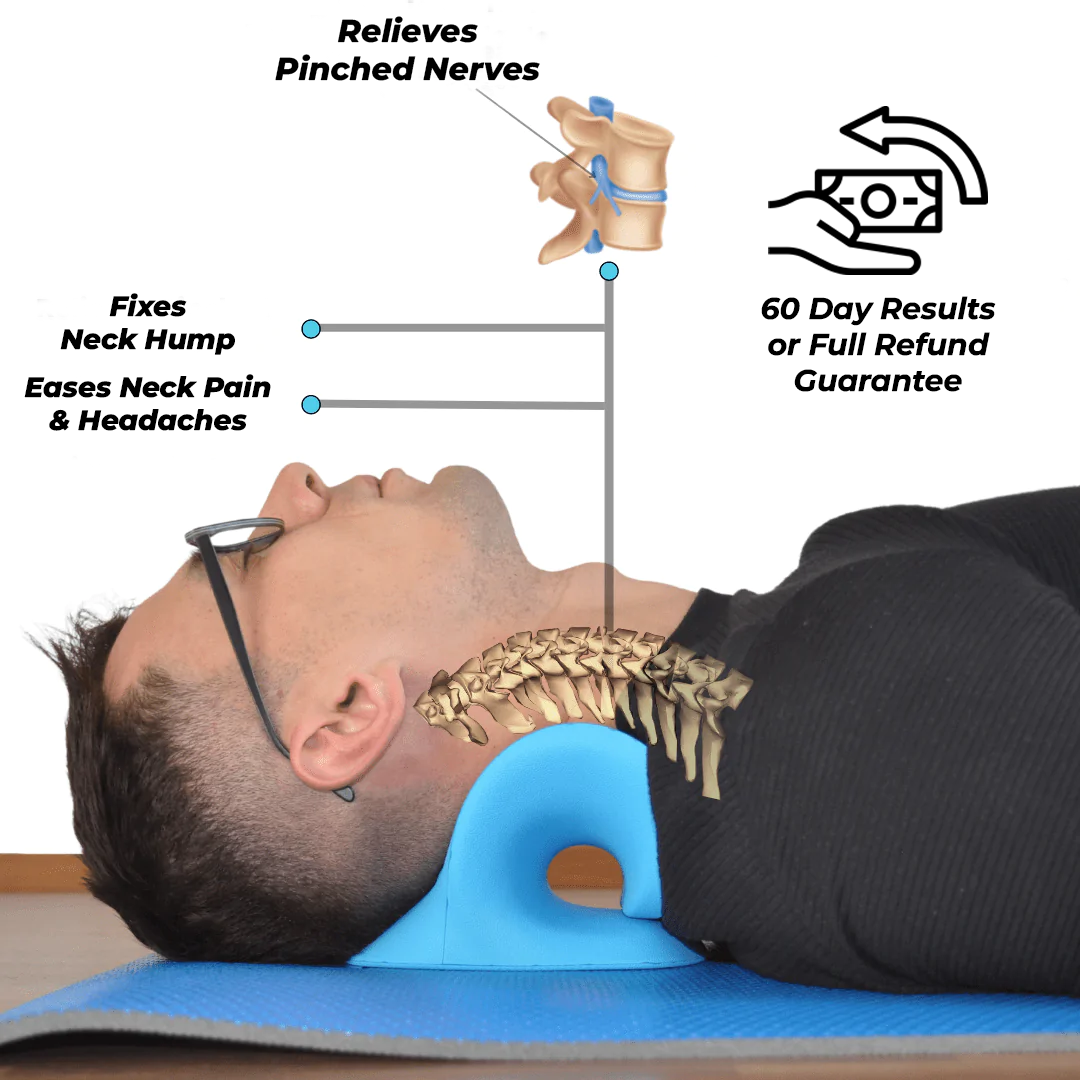Boost Your Stance and Lower Neck Discomfort with the Neck Cloud
Boost Your Stance and Lower Neck Discomfort with the Neck Cloud
Blog Article
Neck Pain in the Office: Identifying Risk Aspects and Implementing Ergonomic Solutions
Neck discomfort in the workplace is a common concern that can affect worker health and performance. By understanding the different threat factors adding to neck pain and implementing ergonomic remedies, organizations can create a much more helpful job environment. Determining these variables is important in creating targeted approaches to reduce pain and stop future injuries. Resolving ergonomic issues not just improves staff member wellness but also promotes general task satisfaction and performance.
Usual Reasons For Neck Discomfort
Neck pain in the office is a common issue that can be connected to several common causes. In addition, repeated motions such as constant bending, turning, or reaching can additionally contribute to neck discomfort over time.

Ergonomic Danger Factors
Poor comfort designs in the work environment can significantly add to neck pain amongst workers. Variables such as incorrect workdesk height, insufficient chair assistance, and uncomfortable positioning of computer displays can all contribute in the advancement of neck pain. When workers are compelled to sit for prolonged periods in settings that stress their neck muscles, it can cause rigidity, soreness, and a lot more severe bone and joint issues gradually.
In addition, poor ergonomic methods can lead to staff members adopting uncomfortable stances while working, such as craning their necks to see a computer screen or reaching uncomfortably for a mouse or key-board. neck cloud. These recurring movements and unnatural settings can put unnecessary stress and anxiety on the neck and surrounding muscles, causing discomfort and lowered productivity

Desk Configuration Recommendations
When establishing up a workdesk in the office, it is vital to take note of the comfort designs of the environment. To minimize the risk of neck pain and discomfort, there are several desk arrangement referrals that staff members need to take into consideration. Firstly, ensure that the computer monitor is positioned at eye degree to stop stressing the neck by searching for or down. The key-board and mouse ought to be placed at a height where the elbow joints are curved at a 90-degree angle to promote appropriate wrist alignment. Additionally, the chair height need to permit the feet to relax level on the floor with thighs alongside the ground.
It is likewise essential to have adequate lights to minimize eye stress, as squinting or leaning onward can cause neck tension. Arrange the workdesk layout to maintain often used things within arm's reach, limiting the need for recurring twisting or reaching activities. By executing these desk arrangement suggestions, employees can develop a much more ergonomic work area that supports neck health and wellness and reduces the threat of establishing work-related neck discomfort.
Stretching and Workout Tips
Basic desk-friendly stretches can help minimize neck discomfort and avoid rigidity. Neck rolls, shoulder shrugs, and mild side-to-side neck stretches are reliable in eliminating tension.
Setting pointers or utilizing applications that motivate motion can aid establish a routine stretching routine. By prioritizing these activities, you can enhance your physical well-being, reduce the threat of neck discomfort, and improve your total efficiency in the office.
Significance of Regular Breaks
In a fast-paced workplace where needs can add to physical pressures like neck discomfort, establishing a routine that emphasizes the importance of normal breaks is extremely important (neck cloud). Taking regular breaks throughout the day is essential for preventing and alleviating neck discomfort. Extended periods of resting or repeated tasks can lead to muscular tissue stress and stiffness in the neck and shoulders. By incorporating time-outs right into the job routine, workers can lower the danger of developing neck discomfort and enhance overall convenience and productivity.
Regular breaks enable employees to rest their muscle mass, stretch, and change settings, preventing rigidity and promoting far better blood circulation. Motivating employees to take short breaks every 30-60 minutes can help in reducing the accumulation of tension in the neck and shoulders. These breaks can also act as a chance for employees to practice relaxation strategies or gentle neck stretches, better promoting bone and joint wellness. Carrying out a society that values and prioritizes routine breaks can have a substantial effect on decreasing neck discomfort and improving general health in the work environment.
Final Thought
To conclude, resolving ergonomic risk aspects and applying appropriate workstation arrangements are essential in minimizing neck discomfort in the office. By advertising excellent pose, giving appropriate assistance, and encouraging routine breaks and stretches, organizations can create why not try here a healthier and extra productive workplace for staff members. Focusing on worker wellness through ergonomic navigate to these guys services is key to preventing pain and boosting general work environment satisfaction.
Neck discomfort in the office is a widespread problem that can affect staff member health and efficiency. By determining and dealing with these usual reasons of neck pain in the workplace, companies can take positive steps to develop a much more comfortable and ergonomic job setting for their employees.
Poor comfort designs in the work environment can substantially contribute to neck discomfort among staff members. By executing these workdesk configuration recommendations, staff members can create an extra ergonomic recommended you read work area that sustains neck health and wellness and reduces the danger of developing job-related neck discomfort.
Neck rolls, shoulder shrugs, and gentle side-to-side neck stretches are reliable in eliminating tension.
Report this page